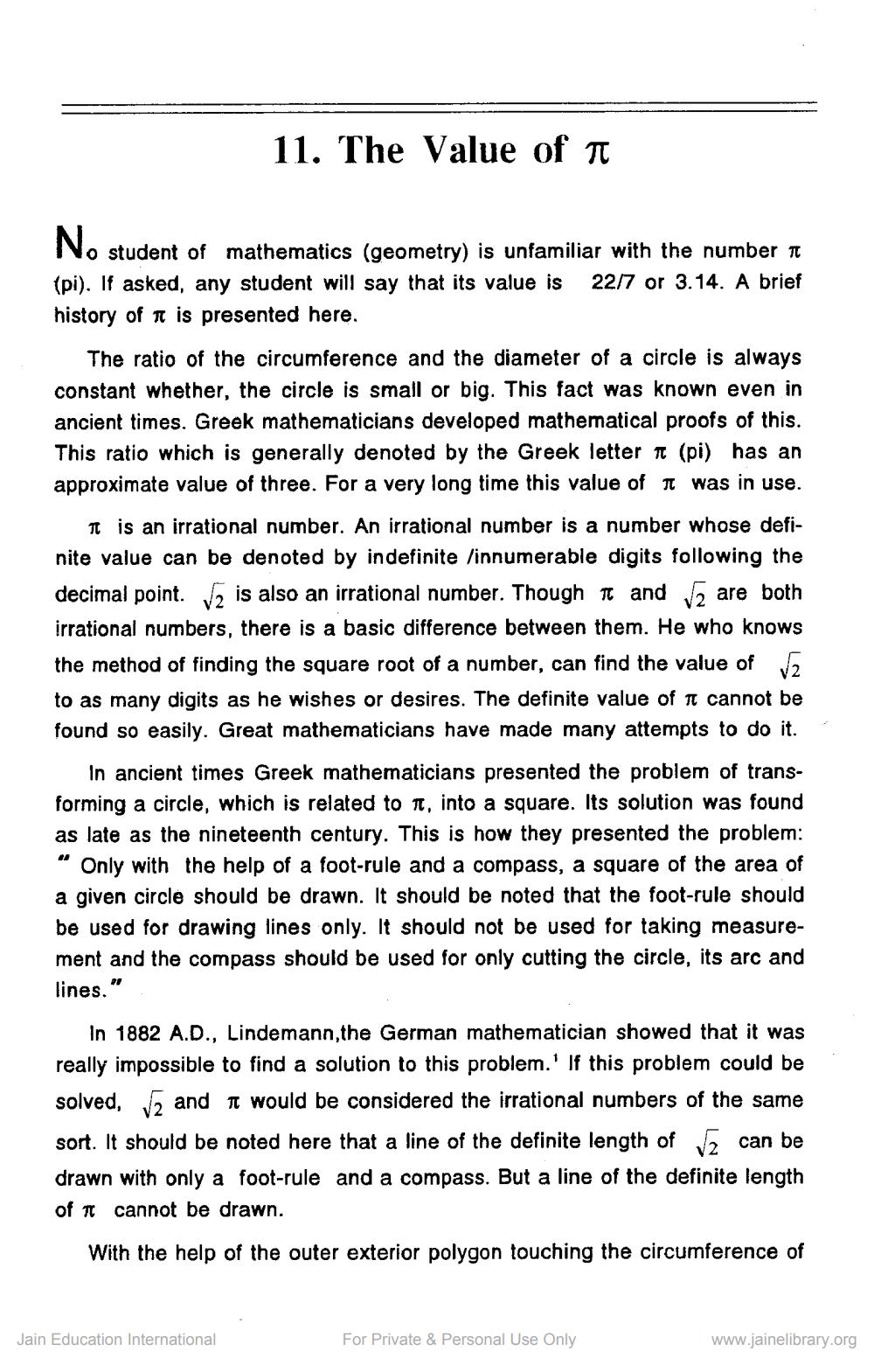________________
11. The Value of n
No student of mathematics (geometry) is unfamiliar with the number at (pi). If asked, any student will say that its value is 22/7 or 3.14. A brief history of a is presented here.
The ratio of the circumference and the diameter of a circle is always constant whether, the circle is small or big. This fact was known even in ancient times. Greek mathematicians developed mathematical proofs of this. This ratio which is generally denoted by the Greek letter a (pi) has an approximate value of three. For a very long time this value of t was in use.
t is an irrational number. An irrational number is a number whose definite value can be denoted by indefinite /innumerable digits following the decimal point. V2 is also an irrational number. Though it and V2 are both irrational numbers, there is a basic difference between them. He who knows the method of finding the square root of a number, can find the value of 12 to as many digits as he wishes or desires. The definite value of n cannot be found so easily. Great mathematicians have made many attempts to do it.
In ancient times Greek mathematicians presented the problem of transforming a circle, which is related to r, into a square. Its solution was found as late as the nineteenth century. This is how they presented the problem: “ Only with the help of a foot-rule and a compass, a square of the area of a given circle should be drawn. It should be noted that the foot-rule should be used for drawing lines only. It should not be used for taking measurement and the compass should be used for only cutting the circle, its arc and lines."
In 1882 A.D., Lindemann, the German mathematician showed that it was really impossible to find a solution to this problem.' If this problem could be solved, V2 and would be considered the irrational numbers of the same sort. It should be noted here that a line of the definite length of 2 can be drawn with only a foot-rule and a compass. But a line of the definite length of i cannot be drawn.
With the help of the outer exterior polygon touching the circumference of
Jain Education International
For Private & Personal Use Only
www.jainelibrary.org




